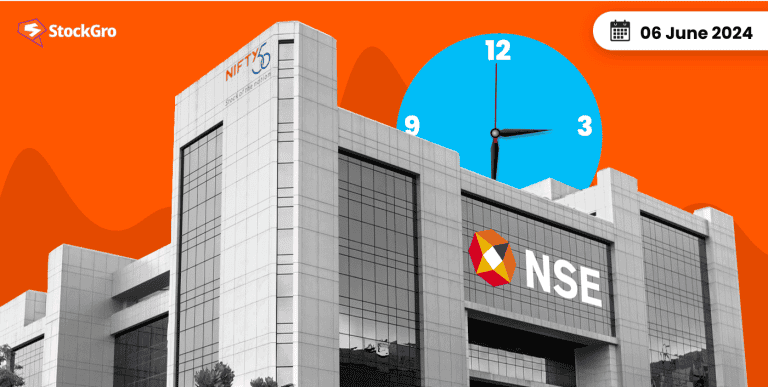
Narendra Modi, revered as India’s dynamic and transformative leader, is celebrated for his visionary policies and decisive governance. Known for his modest lifestyle and unwavering dedication to public service, Modi’s journey from a tea seller to the Prime Minister of the world’s largest democracy is inspiring and intriguing. Let’s explore Narendra Modi’s financial disclosures, examining his assets, investments, and net worth to understand the financial ethos of India’s Prime Minister.
Bio:
| Name: | Narendra Damodardas Modi |
| Place of Birth: | Vadnagar, Gujarat, India |
| DOB: | September 17, 1950 (Age: 73 years) |
| Relative: | Jashodaben Modi (m. 1968; sep. 1971) |
| Political Party: | Bharatiya Janata Party |
| Net worth: | ₹3.02 crore |
Narendra Modi’s early Life and Background
Narendra Damodardas Modi, born on September 17, 1950, in Vadnagar, a small town in Gujarat, India, rose from humble beginnings to become one of India’s most influential political leaders. His father, Damodardas Modi, was a tea seller, and young Narendra often helped him at the tea stall. Modi’s early education took place in Vadnagar. He completed his higher secondary education in 1967. He went on to earn a Bachelor of Arts degree in political science from the University of Delhi and a Master’s degree from Gujarat University. During his early years, he also spent time with the Rashtriya Swayamsevak Sangh (RSS), where his political ideology and leadership skills began to take shape.
Narendra Modi’s political Ascent
Modi’s formal political entry came in 1985 when he joined the Bharatiya Janata Party (BJP). His organisational skills and dedication quickly saw him rise through the ranks. By the 1990s, he was instrumental in the BJP’s campaigns in Gujarat and other parts of India. His first major political office came in 2001 when he was appointed the Chief Minister of Gujarat following the resignation of Keshubhai Patel. As Chief Minister, Modi’s policies focused on industrialization, infrastructure development, and improving governance. However, his tenure was also marred by controversy, most notably the 2002 Gujarat riots, which remain a contentious part of his legacy.

Narendra Modi as Prime Minister of India
In 2014, Narendra Modi led the BJP to a historic victory in the general elections, becoming the 14th Prime Minister of India. As Prime Minister, Modi initiated several key reforms and programs, such as “Make in India,” “Digital India,” and “Swachh Bharat Abhiyan” (Clean India Mission). Modi’s leadership style, marked by decisive action and a charismatic public presence, has both ardent supporters and vocal critics. His tenure has seen significant economic reforms like the implementation of the Goods and Services Tax (GST) and the controversial demonetization of high-value currency notes in 2016. Modi’s government has also focused on welfare schemes, financial inclusion, and infrastructure development.
Narendra Modi’s Movable Assets and Investments
Prime Minister Narendra Modi’s financial portfolio reflects his preference for tangible assets and secure investment options. As per his latest election affidavit, Modi’s movable assets are valued at ₹3.02 crore. One of Modi’s significant financial holdings is in bank fixed deposits, underscoring his preference for low-risk, stable investment avenues. It is noteworthy that Modi does not own shares or mutual fund investments, reflecting a conservative investment strategy emphasising safety and liquidity.
| Asset Category | Details |
| Gold | ₹2.67 lakh (four gold rings) |
| National Savings Certificates (NSCs) | ₹9.12 lakh |
| Bank Fixed Deposits | ₹2.85 crore |
| Cash | ₹52,920 |
| Additional Holdings | ₹73,304 (Gandhinagar); ₹7,000 (Varanasi) |
| Total Movable Assets | ₹3.02 crore |
Narendra Modi’s Immovable Assets and Liabilities
Unlike many politicians, Prime Minister Narendra Modi owns no land, real estate, or vehicles. His election affidavit reveals that he has no immovable assets under his name. Modi does not possess any agricultural land, property, or real estate. Instead, as the Prime Minister of India, he resides in the official residence at 7 Race Course Road (now known as Lok Kalyan Marg) in New Delhi. This residence is fully equipped with all necessary amenities, including an office and comprehensive security details, provided at no cost to him.
Narendra Modi’s Income and Allowances
Prime Minister Modi’s income has seen a noticeable increase over the years. His total income rose from ₹11.14 lakh in 2018 to ₹23.56 lakh in 2023. His salary as the Prime Minister includes several components: a basic pay of ₹50,000 per month, supplemented by ₹6,000 per month for office and household expenses. His monthly salary, including various allowances, amounts to ₹1.6 lakh.
Narendra Modi’s Post-Retirement Entitlements
Upon retirement, Narendra Modi will receive lifetime free accommodation, free medical care, a staff of 14, six domestic air tickets annually, free train travel, and SPG security for one year. He will also have office expenses covered for five years, free electricity and water for life, and a personal assistant and peon with an office budget, reflecting the respect for his service to the nation. His pension will be determined based on the number of years of service.
Conclusion
In today’s world, leaders like Narendra Modi are defined not only by their governance but also by their transparent financial practices and modest lifestyles. Modi’s journey from a tea seller to the Prime Minister is inspiring. As he continues to serve the nation, his disciplined financial approach and simple living will continue to set a commendable example for future generations.

